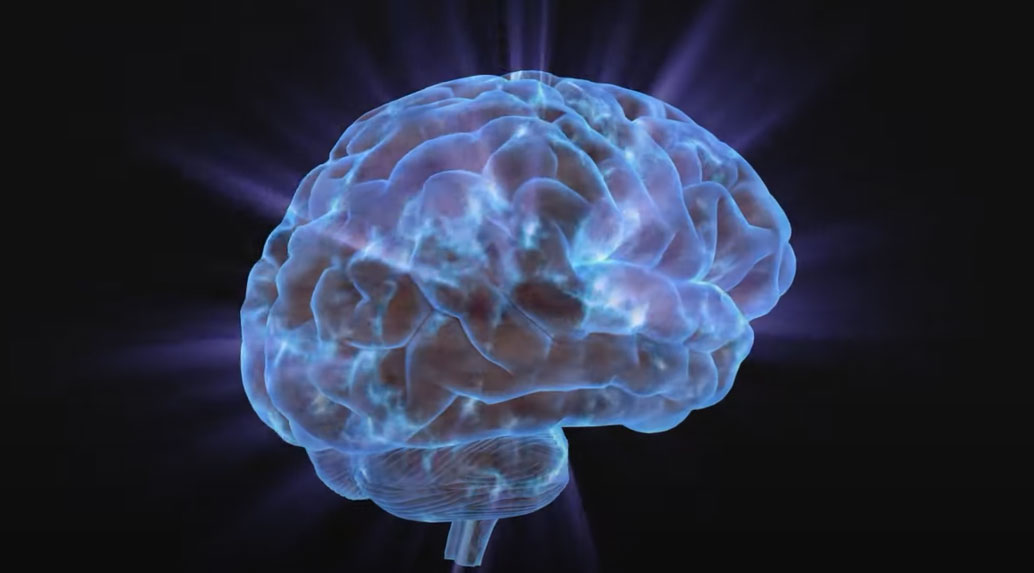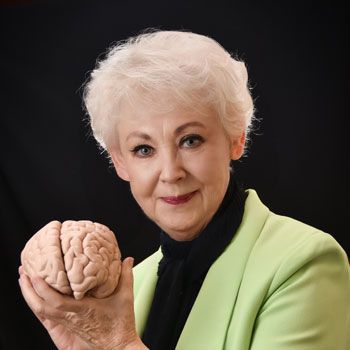©Arlene R. Taylor PhD
 Parents and teachers often ask, “How can I identify a child's brain bent?” That’s a challenge for most adults. How much more so when trying to identify this in a child. In general:
Parents and teachers often ask, “How can I identify a child's brain bent?” That’s a challenge for most adults. How much more so when trying to identify this in a child. In general:
- Give the child a variety of learning opportunities and observe how he/she approaches each activity. What type of comments does the child make? Does the child tend to lose all track of time when engaged in the activity or does the child tend to lose interest quickly?
- Observe the behaviors the child exhibits in classroom settings and then compare them with some of the following commonly described behaviors that tend to be exhibited by children based on brain bent.
Following is a brief summary of how children may be viewed in the classroom (by others) based on their brain bent.
Frontal Lobes (Large Motor Skills)
|
 Prioritizing Prioritizing
Division
|
 Envisioning Envisioning
Division
|
|
Students with a brain bent in this division may:
- Test as “bright”
- Be articulate
- Know more than the other students
- Intimidate the teacher
- Want to make decisions
- Like tools (get more done with less)
- Be very precise
|
Students with a brain bent in this division may:
- Appear as the “genius” who under-performs
- Move around
- Run, jump, hop
- Gesture a lot
- Have difficulty with handwriting
- Be dyslexic and shamed for their difficulty in accessing the Maintainaing division
|
Posterior Lobes (Small Motor Skills)
|
 Maintaining Maintaining
Division
|
 Harmonizing Harmonizing
Division
|
|
Students with a brain bent in this division may:
- Come across as the “good child”
- Touch bounded objects
- Do what they are told
- Exhibit separation anxiety
- Be uncertain when they don’t know the environment
|
Students with a brain bent in this division may:
- Come across as a “pleaser” or as "teacher's pet"
- Have difficulty saying “no”
- Stand by the teacher
- Like to change clothes
- Be with people and talk
- Like to give gifts
|
Frontal Lobes (Large Motor Skills)
|
 Prioritizing Prioritizing
Division
|
 Envisioning Envisioning
Division
|
|
Children with a brain bent n this division:
- Are usually quite precise
- Need to reason in order to learn
- Are often seen as leaders
- Are typically articulate and may even intimidate the teacher
- Are viewed as bright, and appear to know more than the other students
- May see school as a game that must be won in order to be successful (may underachieve, just doing enough to get by)
- Often easily master subjects such as arithmetic, algebra, calculus, statistics, auto mechanics, electronics, engineering, public speaking, and research science
- Prefer tests with multiple-choice questions but can handle essay questions or verbal presentations
- Are talented in goal setting/achievement, strategy development, precision, and inductive/deductive reasoning
- Are limited in ease of speaking foreign languages, spiritual experiences, nurturing, dressing (color, fabric, and style harmony) due to lack of access in the right posterior lobes
- Tend to ask questions such as how does this work or what is its function
|
Children with a brain bent n this division:
- Are often seen as the innovators or smart or geniuses although they may not perform up to expectations of others
- May have oodles of incomplete projects
- Usually have difficulty in writing/spelling
- May have trouble with self-care as in brushing the teeth, tying shoelaces
- May be considered dyslexic due to a reduced ability to perform functions that draw heavily on the left posterior lobes
- May exhibit symptoms of stress or rebellion when required to conform to rules/regulations
- Need to be able to move in order to learn
- May view school as a barely-tolerable situation and are at high risk fordropping out
- Often excel at subjects such as chemistry, physics, geometry, trigonometry, philosophy, creative writing including poetry/essays, as well as artistic creativity (if introverted) or entrepreneurial activities (if extraverted)
- Can handle essay questions (especially if can be prepared on a computer rather than in longhand), lines of poetry, a musical composition, or an art project
- Are talented in exploring the unknown, finding new solutions (inventions), visioning, mimicry, and inspiration
- Are limited in routine self-care, detailed procedures, sequenced details (spelling), and accuracy in addition
- Tend to ask if and what if and how come questions
|
|
 Prioritizing Prioritizing
Division
|
 Visualizing Visualizing
Division
|
|
To validate children with a brain bent in this division:
- Allow them to create debating games and participate in them
- Say things such as, “It’s helpful to have a strong logical argument for what you want to accomplish”
- Understand they want to make decisions (whenever possible, allow them to participate in setting the rules; provide opportunities for making decisions from a selection of previously established options)
- Positively reinforce their attempts at critical analysis and for asking questions such as how does this workor what is its function
|
To validate children with a brain bent in this division:
- Create an affirmative atmosphere for daydreaming and imagining (remind them that some of the world’s most creative individuals are daydreamers)
- Understand that to them rules represent an unnecessary evil so set and enforce a minimum number of rules and explain the reason they are necessary; be willing to adjust rules/regulations
- Encourage exploration, variety, spontaneity, and individuality
- Affirm them for asking if and what if and how come questions
|
Posterior Lobes (Small Motor Skills)
|
 Maintaining Maintaining
Division
|
 Harmonizing Harmonizing
Division
|
|
Children with a brain bent in this division:
- Are usually quite well-behaved
- Are likely to do whatever the teacher expects
- Don’t know the environment and don’t see the big picture easily
- Often exhibit anxiety when change is required
- Need time to learn, to incorporate new information into an existing body of knowledge, or to insert a new step into an already-mastered routine
- Tend to view school as the way life isand try to fit in
- Easily master subjects such as reading, spelling, writing (printing or cursive), bookkeeping, civics, history, and typing
- Prefer true-or-false test questions and like predictability in terms of examinations (can experience extreme stress if a surprise quiz is announced)
- Are gifted at detailed procedures, repetitive tasks, operating machines, routine self-care
- Are limited in drama, novelty, inspiration, and imaginative forecasting/trending
- Tend to ask how to do it right questions
|
Children with a brain bent in this division:
- Are often seen as pleasers
- Have difficulty saying no
- Stay close to the teacher
- Enjoy giving gifts
- Need to talk, play, and work with others in order to learn
- See school as a chance to associate with friends, and view studying as incidental
- Enjoy drama, languages, interior decorating, home economics, counseling, and music
- Don’t like test questions of any kind (prefer practical questions and situations that allow them to exhibit, demonstrate, role-model, or act out/portray the answers in some way)
- Are talented in hosting, spiritual experiences, dressing, and connecting
- Are limited in logical or unpopular decision-making
- Have difficulty with hardball negotiations and/or when doing cost-benefit analysis
- If relationships aren’t rewarding at school, may be at risk for dropping out
- Tend to ask why questions
|
|
 Maintaining Maintaining
Division
|
 Harmonizing Harmonizing
Division
|
|
To validate children with a brain bent in this division:
- Teach procedures sequentially, using at least three steps for each
- Develop, state, and enforce appropriate regulations (rules provide them with predictability and security)
- Discuss pros and cons of needed change
- Introduce concept of change with a preface such as, “You and I are going to load a new procedure” or “You can add this step to the routine you are already using”
- Acknowledge the discomfort associated with change and help the child to adjust
- Affirm them for asking how to do it rightquestions
|
To validate children with a brain bent in this division:
- Allow opportunities for them to help plan and give a party; to make and give a gift
- Provide time to talk about the rules and make sure they apply to everyone equally
- Support them in decision-making activities
- Make comments such as, “If you need help in making a choice, I’m here to help you”
- Provide playing time and costumes for dress-up and drama (or for) play-acting
- Afford plenty of touch affirmation
- Affirm them for helping others to feel included, comfortable, or at home
- Affirm them for asking questions (explain that the brain has difficulty answering “why” questions but can usually come up with “reasons” for things)
|
Remember that commonly observed classroom behaviors may be skewed in a specific child based on factors such as:
- Parental preference or brain bent, etc.
- Opportunities that the child has been given to date
- The past experiences of the child (especially those related to unrealistic expectations, rewards, or punishment)
- The child’s perception of who he/she needs to be to make the parents feel okay about themselves
- Gender
- East Brain or West Brain
- Sensory Preference
- Position on the Extrovert-Ambivert-Introvert Continuum
- The presence of abuse or vicarious exposure to abuse
- The presence of an intact versus a fractured family system
- Pressure from culture, society, family, school, religion, etc.
- Being downshifted due to fear, trauma, crisis, or anxiety
- Whether the child has been medicated due to a diagnosis of ADD or ADHD
 Parents and teachers often ask, “How can I identify a child's brain bent?” That’s a challenge for most adults. How much more so when trying to identify this in a child. In general:
Parents and teachers often ask, “How can I identify a child's brain bent?” That’s a challenge for most adults. How much more so when trying to identify this in a child. In general:



 Prioritizing
Prioritizing 